To me, there are several distinct categories of taxidermy. There's exhibit museum taxidermy, which is often quite old but usually of good quality, and which usually displays the animals in their entirety. The mounts are accompanied by information of some sort, and are (generally) meant for the public to see. Another category is trophy taxidermy; these animals are "game" animals, hunted for meat and/or sport, and are mounted for personal enjoyment rather than scientific value. More often than not, herbivores (deer, pronghorns, antelopes, etc.) are displayed as shoulder mounts, carnivores (wolves, coyotes, foxes, bobcats, etc.) as well as bears are displayed as full-body mounts or rugs, and birds and fish are mounted in their entirety.
Then, there's nature center taxidermy, an odd assortment of mounts that I think deserves its own category. Usually, these mounts are old and faded. They are often donated, and the skill with which they were constructed leaves much to be desired. I've come to find that nature center taxidermy is a strange mixture of hunting trophies, mounted roadkill, and unwanted museum specimens.
Today, we visited Kensington Metropark. After feeding the chickadees, titmice, and nuthatches, we went to the nearby nature center to warm up. It's a decently-sized building, with several interactive displays, a few live animals (reptiles, fish, and a beehive), and lots of taxidermy.
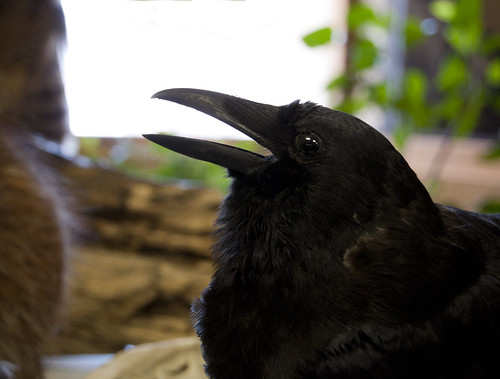
This crow was one of the better mounts on display. I found that most of the bird mounts were far more lifelike than their mammalian counterparts; taxidermists seem to have a tendency to mount mammals (especially carnivores) in artificially ferocious poses.


An albino opossum with a strangely humorous and inquisitive expression. It's standing high atop a display cabinet that features a mounted passenger pigeon.
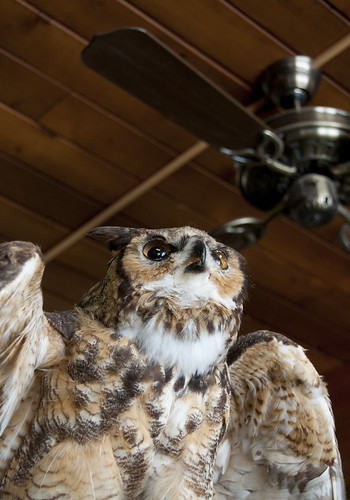

A great-horned (?) owl stretches its wings for eternity; the pose seems ironic, somehow, when matched against hardwood boards and a ceiling fan.
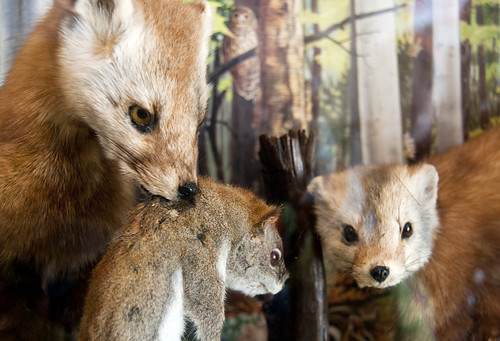

This pair of American martens (with their red squirrel prey) were incorrectly identified as pine martens -- their European counterpart. In addition, the glass eyes of the marten on the left are certainly not mustelid eyes. They're quite out of place at Kensington Metropark, seeing as how martens are extinct in Michigan's lower peninsula (they're found in select regions of the Upper Peninsula, and even then, they are rather uncommon).
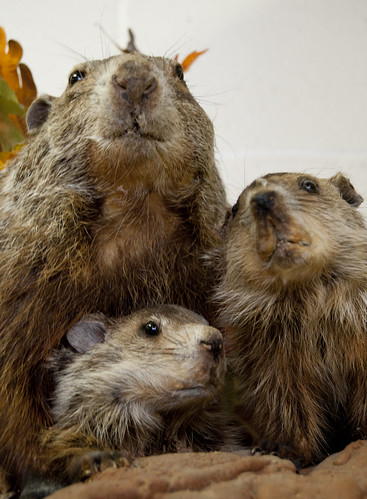

A group of dramatic-looking woodchucks. The individual on the right is especially rough in appearance. One has to wonder if these woodchucks, depicted as a family, were actually related in nature (chances are, they probably weren't).
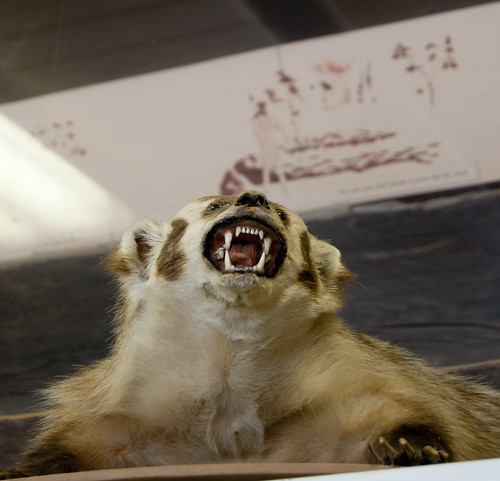

Lastly, an American badger, sporting a manufactured snarl, rests high atop a display cabinet. These animals, in nature, spend much of their time digging burrows underground.
A large portion of the taxidermy displayed in nature centers represents animals that the average visitor will never encounter in the wild in his or her lifetime. Though old and faded, these mounted animals provide a window into the natural world, for children and adults alike. Perhaps they will inspire a child to love and respect nature -- I know long ago, that was the case for me.
A large portion of the taxidermy displayed in nature centers represents animals that the average visitor will never encounter in the wild in his or her lifetime. Though old and faded, these mounted animals provide a window into the natural world, for children and adults alike. Perhaps they will inspire a child to love and respect nature -- I know long ago, that was the case for me.




badgers, we don't need no steeenkin badgers!
ReplyDeleteWe certainly have an array of odd mounts at the UMMZ!
Definitely looks like a Great Horned Owl to me.
ReplyDelete